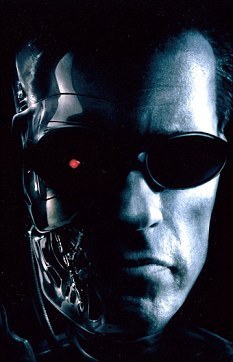
Terminator: The "semi-mechanical biotechnology" in real life may not be so terrible. Researchers say that such technology will one day be applied to the human body to help humans overcome a series of brain damage caused by Parkinson's disease
Beijing time, January 20th, according to the British "Daily Mail" reported that due to an amazing but also controversial research breakthrough, the damaged brain part can be replaced with an electronic chip. This technique has been conceived many times in science fiction works, including fictional characters such as "Terminator", he is a combination of muscle and machinery. But now, researchers at Tel Aviv University in Israel have successfully manufactured a chip that can be used to achieve certain motor functions, such as blinking, and can be implanted inside the brain.
The researchers hope that this technology can help people overcome certain brain diseases in the future, such as Parkinson's disease. The method is to replace damaged brain parts or tissues with electronic chips that can produce the same function. Psychobiologist Matti Mintz said: "Imagine a part of the tissue inside the human brain is damaged, and imagine that we already understand the internal structural characteristics of this damaged area. So we decided to replace these with electronic devices. Damaged location. "Mintz has successfully replaced the cerebellum of a mouse with a damaged brain using electronic components and successfully restored its motor function.
Mintz pointed out that the function of the cerebellum is to coordinate the body's motor function. When he implanted this electronic device into the mouse and connected it to the brain, this "artificial cerebellum" successfully realized the function of receiving from the brain, interpreting the information and transmitting the information to the relevant parts of the body.
To test the function of this artificial interface in communicating the connection between the body and the brain, the researchers tried to teach a brain-damaged mouse to blink when it heard a certain sound. Experimental results show that when no artificial cerebellum is implanted in the body, the mouse with damaged brain cannot complete this action, and when the artificial cerebellum is successfully implanted, it can complete this action. Researchers say that this electronic device is specially designed to mimic natural neural activity.
Mintz said: "This is a proof that we can record the information sent by the brain and decode it like an organism and send the feedback information back to the brain." Professor Mintz recently made a report at an international academic conference. Report on the progress of this research. In the future, this artificial cerebellum is expected to be used in the treatment of damage to the human brain.
However, anti-vivo anatomy movements pointed out that such experiments are "absurd." In an interview with the British Broadcasting Corporation (BBC), the chairman of the "National Association Against Biopsy" Jan Creamer said: "This type of research has stirred up huge ethical controversy. These poor little animals His life is thus wasted in such controversial, self-righteous experiments. "
Box Tissues,Kleenex Box,Facial Tissue Box,Kleenex Tissue Box
ShanDong YongFang Sanitary Products Co.,Ltd , https://www.sdyongfang.com